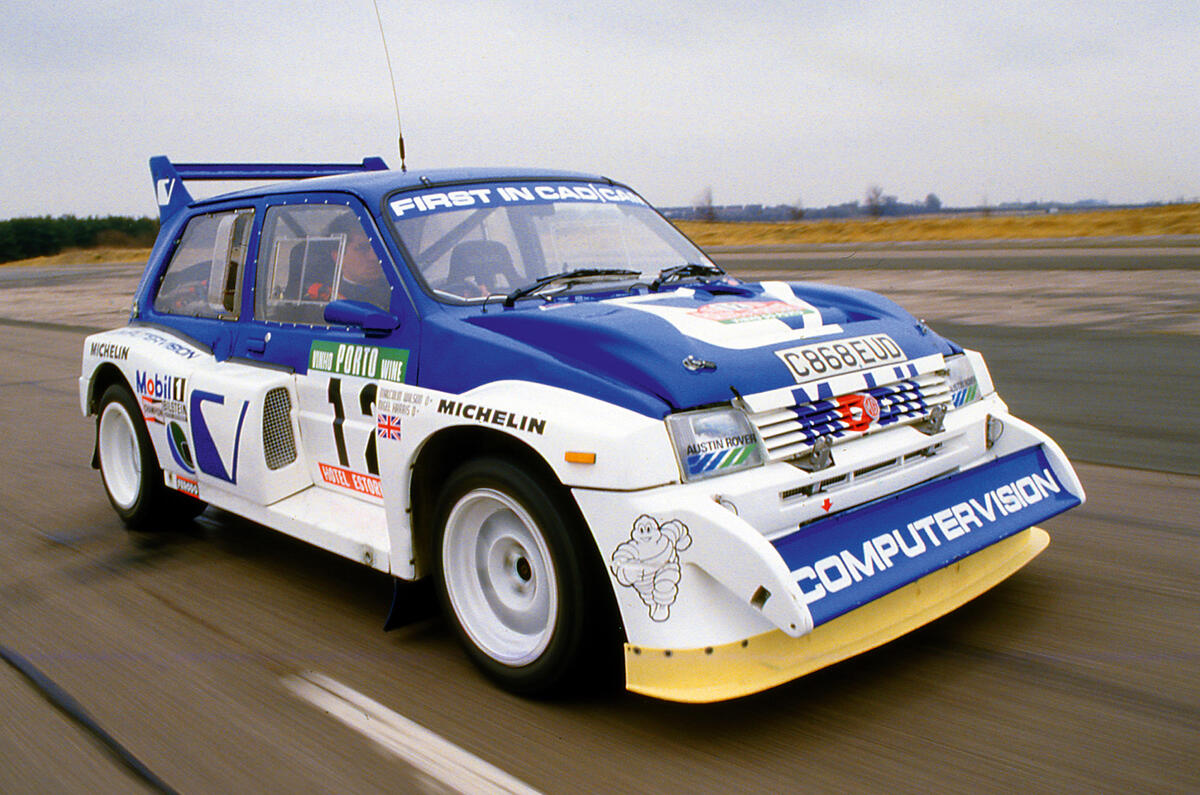The chance to fit Autocar’s Correvit timing equipment to a Group B rally car wasn’t one that technical editor Graham Jones was going to pass up.
With top rally driver David Llewellin at the wheel and Jones as the second tester in the co-driver’s seat, the British-built competition car recorded times that were unparalleled by the standards of the day and remain stunning in 2016.
Jones wrote: “The Metro’s 2991cc V6 proved quite capable of accelerating without the slightest hint of baulkiness from 20mph – an incredible feat for a full-blown competition engine producing in excess of 400bhp – and powered the 6R4 to a series of mind-boggling incremental times, the most impressive being the 2.8sec required to climb from 70 to 90mph, while the slowest – 20 to 40mph – was still only 4.2sec… and this was fifth gear.”
Autocar’s man could barely hide his incredulity at how fast the mid-engined, four-wheel-drive hatchback was. “Part of the raison d’être of the MG is its lag-free throttle behaviour and tremendous mid-range,” he explained. “Power delivery could be likened to being on the crest of a virtually permanent horsepower wave available with just a touch on the throttle pedal.
“Evidence of the consistency of torque – the maximum is 270lb ft at 6500rpm but the curve remains above 230lb ft between 5000 and 9000rpm – can be seen in the in-gear incremental times.
“In fourth, for instance, there is but 1.0sec difference between the quickest and slowest 20mph intervals spanning the 20-90mph acceleration. The quickest interval was an amazing 1.3sec between 30 and 50mph in second gear.”
The Computervision-sponsored Metro 6R4 was the quickest machine Autocar had ever figured and, but for a quill shaft failure in the differentials as Llewellin and Jones launched into the first standing-start run, the figures could have been even more impressive.
“The shaft was a development item and its failure, plus signs of fatigue in the shaft subsequently fitted so we could complete our runs, suggested it wasn’t quite up to handling the forces imparted by the V6 engine,” wrote Jones.
“With the replacement shaft fitted by the Austin Rover mechanics, Llewellin drove slowly back to the horizontal straights and proceeded to reel off half a dozen runs, the last pair of which produced the mean test results.
“At 1.2sec to 30mph, 3.2sec to 60mph and 8.2sec to 100mph, it is the fastest-accelerating wheel-driven car ever tested by Autocar. Furthermore, the 11.5sec required to cover the standing quarter mile (terminal speed, 117mph) means the 6R4’s performance would put many purpose-built dragsters to shame.”





Join the debate
Add your comment
Or Ford's RS200
IAD
This comment is perhaps a little unfair. When it is noted how 'antiautomotive' UK government,industry and society has been and including the disastrous effects of the UK staying out of the Euro,( with the eventual collapse of all British industry from cutlery to aircraft, bicycles to trucks and cars to electric motors), the net effect of which at least made the UK a good assembly plant for Asian owners and technology,(from Nissan to Tata), the fact that IAD survived as long as it did is a miracle.
What has been lost with their demise can be seen in the product of just one of their alumni, Marcus Hotblack's work on the Ford Territory.
Worthing's part in 6R4
We even had a Forest stage set up car on the IAD UK Fleet which could bee seen running around Worthing occasionally, quite a sight and sound.
Never quite as cool as the Peugeot, Lancia or Audi but still great.